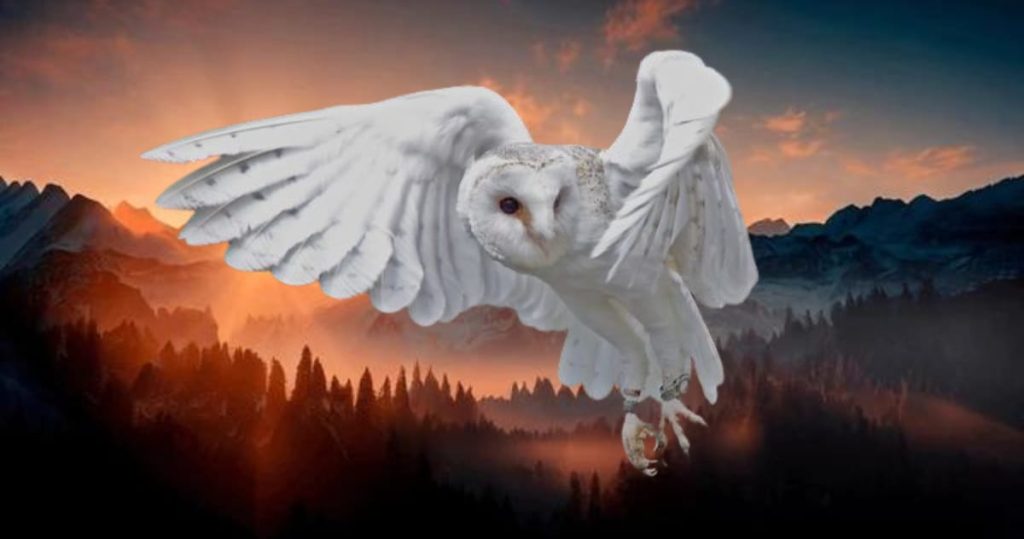
Nocturnal owl, meaning in simple words, owls are active at night and do all their work. There are about 254 species of owls in the world, which is why the question may arise. Are all owls nocturnal or some diurnal?
Depending on the environment or species, we find some owl species are nocturnal, some owl species are diurnal, and some owl species are active at both times.
When we say owls, we always think they are nocturnal and only hunt at night. Most owl species are nocturnal, but ideal hunting times are twilight, full moon nights, and dawn.
Let’s take a look at the different owl species and determine which ones are nocturnal and which are diurnal.
Contents
- 1 Are All Owls Nocturnal?
- 2 Are owls nocturnal or crepuscular? – List
- 3 Why Owls are Nocturnal?
- 4 Physical characteristics
- 5 To avoid competition
- 6 To stay safe from predators
- 7 To consume less energy in the body
- 8 To get the prey of choice
- 9 To regulate body temperature
- 10 Which owls are diurnal?
- 11 Which Owl is Nocturnal and Diurnal?
- 12 Are owls crepuscular?
- 13 Are barn owls nocturnal?
- 14 Are snowy owls nocturnal?
- 15 Are barred owls nocturnal?
- 16 Are tawny owls nocturnal?
- 17 Are burrowing owls nocturnal?
- 18 Are all UK owls nocturnal?
- 19 Which owls are not nocturnal?
- 20 FAQs
- 21 Conclusion
Are All Owls Nocturnal?
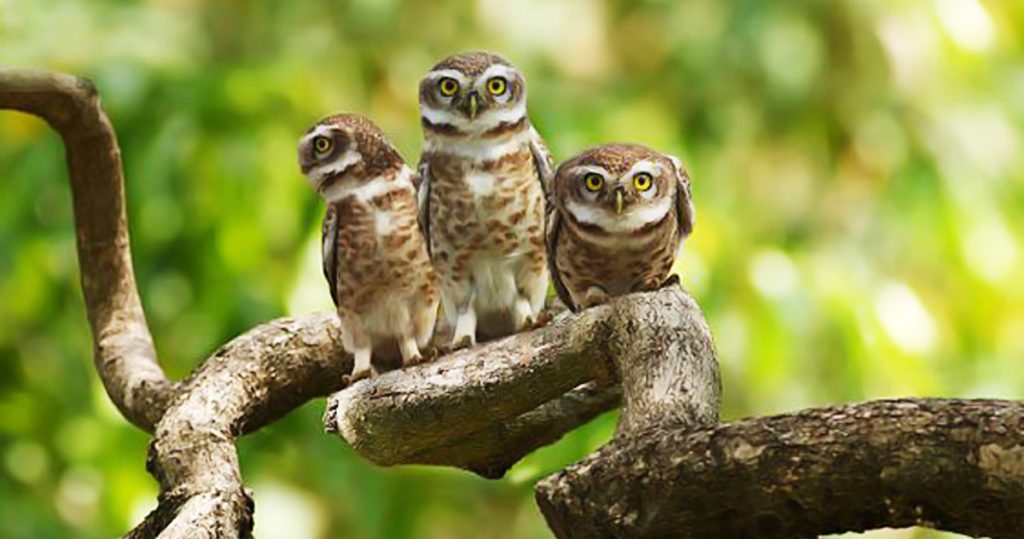
Let’s hope you got the answer above: is an owl nocturnal or during? However, not all owls are nocturnal birds, but most species of owls are nocturnal.
That is, most species of owls hunt at night and shelter and sleep during the day. Owls are adapted to hunt and navigate in low light at night.
Owls have large eyes that enable them to see well in low light and to navigate through the slightest movement of prey.
Especially snowy owls, little owls, burrowing owls, short-eared owls, etc. species of owls have adapted to be active in day and night light.
Are owls nocturnal or crepuscular? – List

Although most owls are nocturnal, their ideal hunting hours are dawn and dusk, when there is relatively little ambient light. Below is a list of nocturnal owls, diurnal owls, and crepuscular owls:
| Nocturnal owls | Diurnal owls | Crepuscular owls | Owls are active both day and night |
| Barn Owl (Tyto alba) | Northern Hawk Owl (Surnia ulula) | Northern Saw-whet Owl (Aegolius acadicus) | Snowy Owl (Bubo scandiacus) |
| Great Horned Owl (Bubo virginianus) | Northern Pygmy Owl (Glaucidium gnoma) | Tawny Owl (Strix aluco) | Australian Masked Owl (Tyto novaehollandiae) |
| Tawny-bellied Screech Owl (Megascops watsonii) | Pearl-spotted Owle (Glaucidium perlatum) | Eastern Screech Owl (Megascops asio) | Barking Owl (Ninox connivens) |
| Pernambuco Pygmy Owl (Glaucidium mooreorum) | Hawk Owl (Ninox strenua) | Striped Owl (Pseudoscops clamator) | Brown Hawk Owl (Ninox scutulata) |
| Barred Owl (Strix varia) | Rufous-legged Owl (Strix rufipes) | Black-crowned Night Heron (Nycticorax nycticorax) | |
| Northern White-faced Owl (Ptilopsis leucotis) | Vermiculated Fishing Owl (Scotopelia bouvieri) | Tamaulipas pygmy owl (Glaucidium sanchezi) | |
| Ashy Storm Petrel (Oceanodroma homochroa) | Long-eared Owl (Asio otus) | Ferruginous Pygmy Owl (Glaucidium brasilianum) | |
| Elf Owl (Micrathene whitneyi) | Boreal Owl (Aegolius funereus) | Brown Fish Owl (Ketupa zeylonensis) | |
| Spectacled Owl (Pulsatrix perspicillata) | Black-and-white Owl (Ciccaba nigrolineata) | Spotted Owl (Strix occidentalis) | |
| Collared Scops Owl (Otus lettia) | Stygian Owl (Asio stygius) | Blakiston’s fish owl (Bubo blakistoni) | |
| Moluccan Owl (Tyto sororcula) | Whiskered Screech Owl (Megascops trichopsis) | Short-eared Owl (Asio flammeus) | |
| African Wood Owl (Strix woodfordii) | Burrowing Owl (Athene cunicularia) | ||
| Southern Boobook (Ninox boobook) | Little Owl (Athene noctua) | ||
| Eurasian Eagle Owl (Bubo bubo) | |||
| Snowy-browed Owl (Pulsatrix triheter) | |||
| Philippine Eagle Owl (Bubo philippensis) | |||
| Palau Owl (Tyto murivorus) | |||
| Brown Wood Owl (Strix leptogrammica) | |||
| Spotted Eagle Owl (Bubo africanus) | |||
| Mottled Owl (Ciccaba virgata) | |||
| Barred Eagle Owl (Bubo sumatranus) | |||
| Madagascar Long-eared Owl (Asio madagascariensis) | |||
| Great Grey Owl (Strix nebulosa) | |||
| Ashy-faced Owl (Tyto glaucops) | |||
| Eastern Grass Owl (Tyto longimembris) | |||
| Buff-fronted Owl (Aegolius harrisii) | |||
| Tengmalm’s Owl (Aegolius funereus) | |||
| Madagascar Scops Owl (Otus rutilus) | |||
| Northern Barred Owl (Strix varia varia) | |||
| African Scops Owl (Otus senegalensis) | |||
| Philippine Scops Owl (Otus megalotis) | |||
| Crested Owl (Lophostrix cristata) | |||
| Eurasian Pygmy Owl (Glaucidium passerinum) | |||
| Sunda Scops Owl (Otus lempiji) | |||
| Moluccan Scops Owl (Otus magicus) | |||
| Lesser Sooty Owl (Tyto multipunctata) | |||
| Sooty Owl (Tyto tenebricosa) |
Why Owls are Nocturnal?
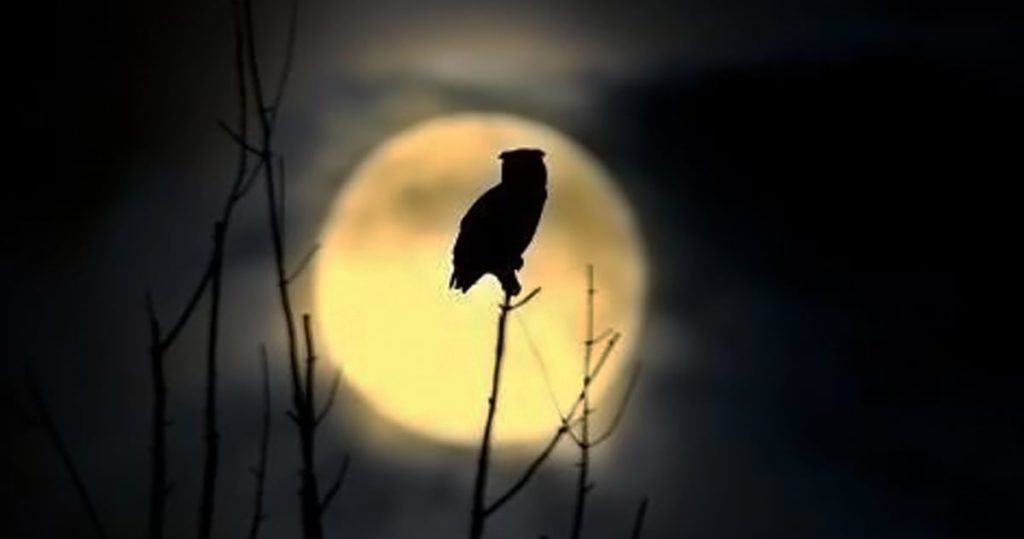
I discuss below several reasons why most owl species are nocturnal rather than diurnal:
Physical characteristics
Owls have unique physical characteristics, especially large eyes that help them see well in low light and can cause problems for their eyes in high light. In addition, owls have a very keen sense of hearing, and the environment is quieter at night than during the day, which helps them detect the slightest movement of prey and hunt efficiently.
To avoid competition
Eagles, hawks, peregrine falcons, etc. are known as daytime birds of prey. Owls and all these birds of prey have more or less the same type of prey in their diet. If owls hunt during the day, they would have to compete with other birds of prey, so it can be said that owls hunt at night to avoid competition.
To stay safe from predators
Most animals are active during the day, so if owls are more active and hunting during the day, their risk of predation increases from night to day. So it can be said that owls have chosen the night as their hunting and active time to avoid most daytime predators.
To consume less energy in the body

Hunting or flying in the presence of daytime sunlight reduces the energy of birds of prey more because it is hotter during the day. Lack of prey and high energy expenditure can weaken a bird of prey and sometimes increase the risk of death, so most species of owls have chosen the night as their preferred hunting time.
To get the prey of choice
Owls’ preferred prey list includes small mammals and insects that are active after sunset and retreat to safe havens after sunrise. Most species of owls choose night as the ideal time to catch their prey and collect their favorite food.
To regulate body temperature
Owls are covered with thick feathers that help keep their bodies warm. Night is therefore the ideal hunting time for owls, as the weather is cooler during this time. Owls have a variety of thick feathers on their bodies that prevent outside air from touching their skin, which can cause problems with owls overheating during the day. So owls are active at night to regulate their body temperature.
Which owls are diurnal?
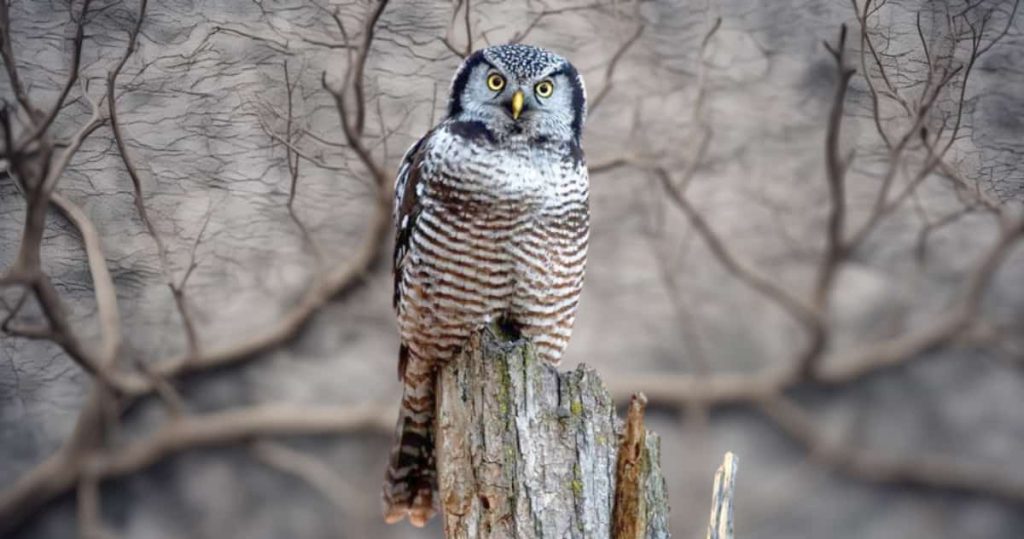
Several owl species prefer to hunt during the day rather than at night due to their environment or species.
However, the number of diurnal owls is very low. Northern Hawk Owl, Northern Pygmy Owl, Pearl-spotted Owl, and Hawk Owl These species are known as diurnal owls.
These diurnal owls perform all their activities, such as hunting, guarding their habitat, and taking care of their young during the day, and at night they take refuge in safe places.
Which Owl is Nocturnal and Diurnal?
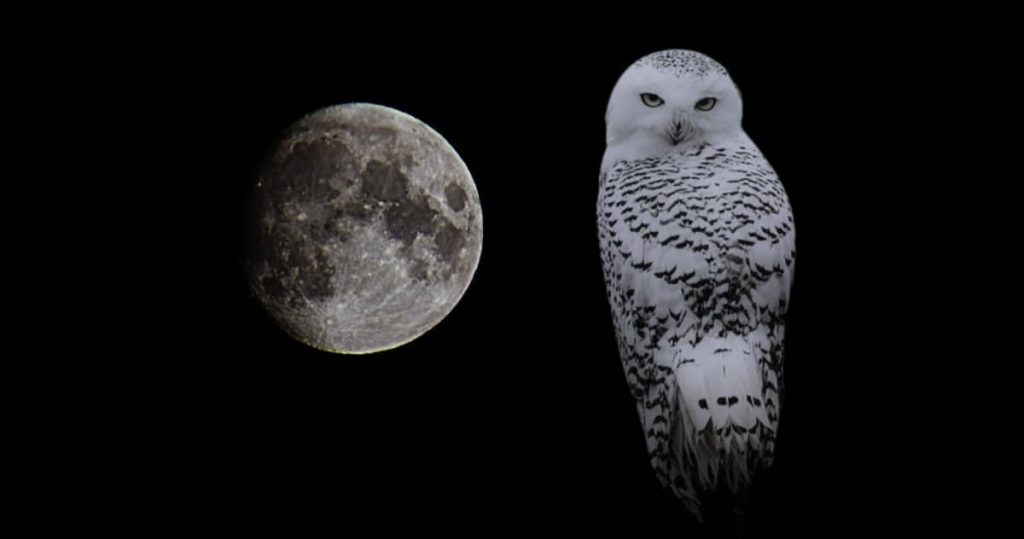
Several species of owls are called both nocturnal and non-nocturnal owls because these owls can be found active or resting at any time of the day or night.
This symptom is more common among owls, which are mainly migratory owl species. Owls on this list include the Snowy Owl, Burrowing Owl, Short-eared Owl, etc.
Snowy owls, for example, live mostly in the Arctic region, but in winter they move far south from their habitat to escape the harsh winters and hunt for prey.
Snowy owls in Arctic regions prefer to hunt during the day, but when they leave the Arctic region for southern regions, they hunt at night.
Are owls crepuscular?
Animals that are mainly active during dawn and dusk are called the Crepuscula class of animals. About 22% of owls found in the world are classified as crepuscular.
Crepuscula are called Barn owls, Eastern Screech Owls, Long-eared Owls, Burrowing Owls, Eurasian Eagle Owls, Great Gray Owls, etc.
Crepuscular owls have a hard time catching prey in the dark at night, which is why they are ideal for hunting in low light, especially just before sunset and just before sunrise.
The main reason why Crepuscula owls hunt at this time is because some of their favorite prey return home or leave their nests to look for food, so this species of owl does not run out of food.
Are barn owls nocturnal?
Barn Owl This medium-sized owl is the most abundant in the world and can be found almost everywhere. Although these species of owls are nocturnal, they are most active in the low light of dawn and dusk.
They have excellent eyesight, silent flight, and excellent hearing, which makes them an efficient bird of prey. They hunt at night and take shelter during daylight in dark places like tree hollows, abandoned houses, barns, etc.
There are several subspecies of barn owls, and they are distributed all over the world except Antarctica, so their hunting time and behavioral characteristics can be observed more or less differently.
Are snowy owls nocturnal?
It would not be wrong to say that snowy owls are native to the Arctic, which is why this species of owl is also called the Arctic owl. This beautiful owl with white feathers is a large species of owl.
Snowy owls are not nocturnal owls; they are diurnal owls that hunt all day in the Arctic during the summer and rest at night.
These species of owls are also known as migratory owls because they leave their habitats and move south during the winter season.
Going south, their hunting time changes, so they become opportunistic hunters. Snowy owls in this region are classified as crepuscular owls because they hunt around dawn and dusk.
Are barred owls nocturnal?
Barred owls are medium-sized owl species that are nocturnal because these species of owls start hunting after sunset and stop hunting after sunrise in the morning, after which these species of owls seek safe shelters to hide in the daylight.
This species of owl is off-white with dark feathers all over their body, which helps them camouflage by blending in with their surroundings. However, this owl species has been observed to occasionally hunt during the day, depending on habitat and food availability.
However, various studies have shown that even though these species of owls sleep during the day, they are not completely inactive but are alert, which helps them to be aware of various activities happening around them.
Are tawny owls nocturnal?
Tawny owls are a small owl species whose color is brown or gray. Yes, they are nocturnal owls, but these species of owls are not active all night. The ideal time to hunt or be active for these species of owls is twilight, which is why they are called crepuscular owls.
Tawny owls prefer to hunt small mammals and insects. Because owls of this species are small, they are more likely to be attacked by other predators, which is why these species of owls have chosen the twilight period to be active.
These species of owls are very easily able to camouflage themselves from the surrounding environment.
Are burrowing owls nocturnal?
Most species of owls are nocturnal, but several species of owls can be seen hunting both day and night.
Burrowing owls are best known for nesting in burrows in the ground. This species of owl can be seen active both at night and during the day.
These species of owls are small in size, and their preferred prey is more active during the day.
This species of owl hunts more insects, which are more active during daylight hours, and their special eyes allow them to see in low light at night.
So we find these species of owls active both during the day and at night.
Are all UK owls nocturnal?
Although most species of owls living in the UK are nocturnal, not all species of owls living in the UK are nocturnal.
The Tawny Owl is the UK’s most common owl species, being nocturnal but often active during the day in winter.
Barn owls, on the other hand, tend to be more active at dusk and dawn. It would not be wrong to call them crepuscular instead of nocturnal.
Little owls living in the UK are active in the low light of dusk and dawn, which is why they are called crepuscular owls.
For example, short-eared owls can be active or rest at any time of the day or night.
The behavior of owls depends on their species, so not all species of owls inhabiting the UK are nocturnal or diurnal.
Which owls are not nocturnal?
Most owl species found in the world are nocturnal, but two species of owls have been discovered that actively hunt during the day because they are more comfortable during the day.
First on this list is the Northern Hawk Owl, which belongs to the Strigidae family. Found in the United States, Canada, Eurasia, Norway, the Soviet Union, etc., they are not nocturnal or crepuscular species of owls; rather, they are known as non-nocturnal owls.
The second is the Northern Pygmy Owl, a small owl species found in the United States, Canada, and Mexico. These species of owls are mainly known as non-nocturnal. they hunt small animals in daylight.
FAQs
Q. Do barred owls hunt during the day?
Ans: Barred owls are nocturnal owls that hunt primarily after sunset, before sunrise, and moonlight at night.
Q. Are snowy owls diurnal?
Ans: Snowy owls are seen to be active during the day and night. However, snowy owls are more active during the day when they are in the Arctic region and are seen to be active at night when they migrate to other areas.
Q. Are little owls nocturnal?
Ans: Little owls are crepuscular because they are most active before sunrise and after sunset.
Q. Is an owl nocturnal?
Ans: Yes, most species of owls are nocturnal, but not all species of owls are nocturnal.
Conclusion
In response to the above-mentioned question of “Are owls nocturnal animals or Are all owls nocturnal“, I have appropriately answered which species of owls are more active at what time.
You can get the help of your nearest forest department to learn more about the owls living in your environment and, if necessary, help them save this beautiful bird of prey.
Your knowledge of owls, which will fuel your love for these birds, can save the species from extinction.
Owls play an important role in controlling their population in our environment by hunting animals like rats, mice, insects, etc. So these birds are eco-friendly.